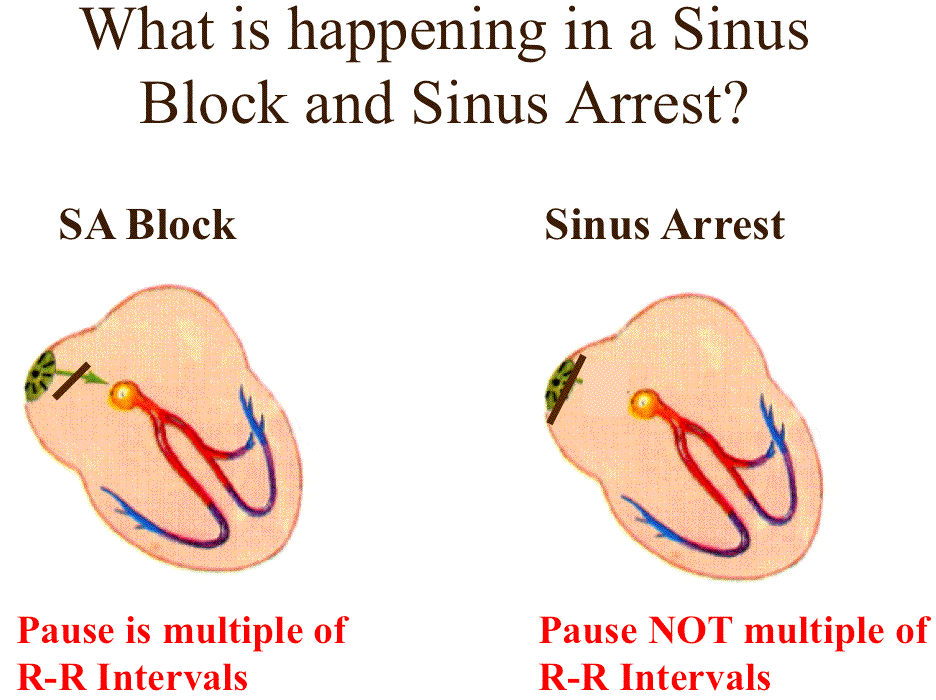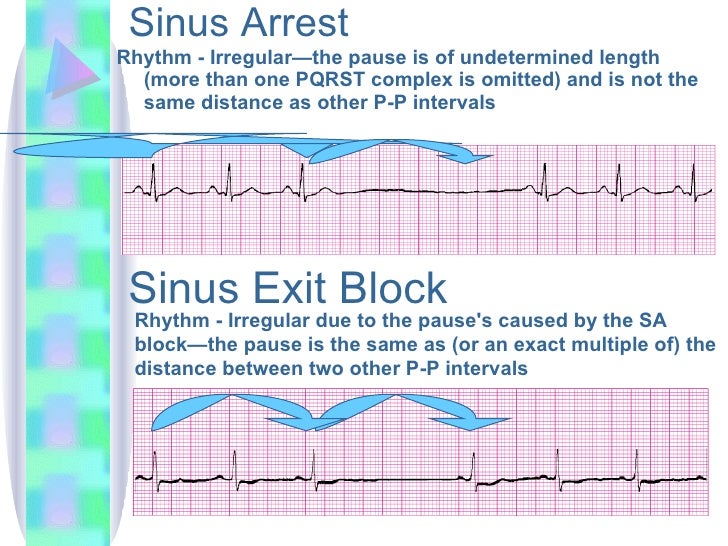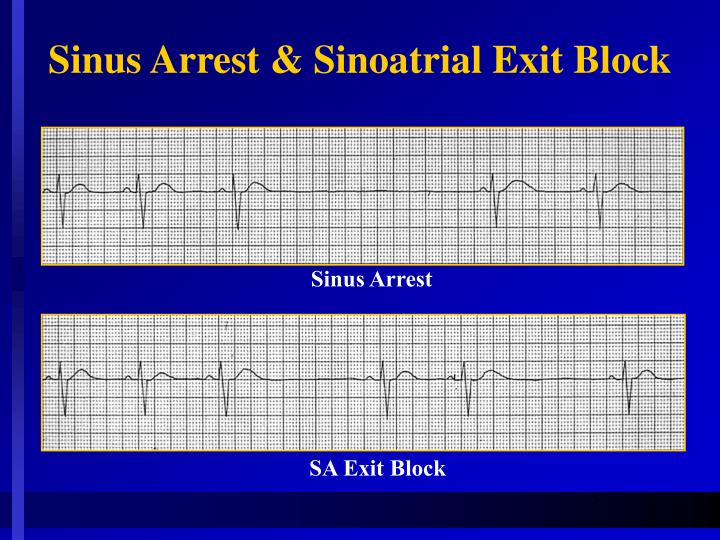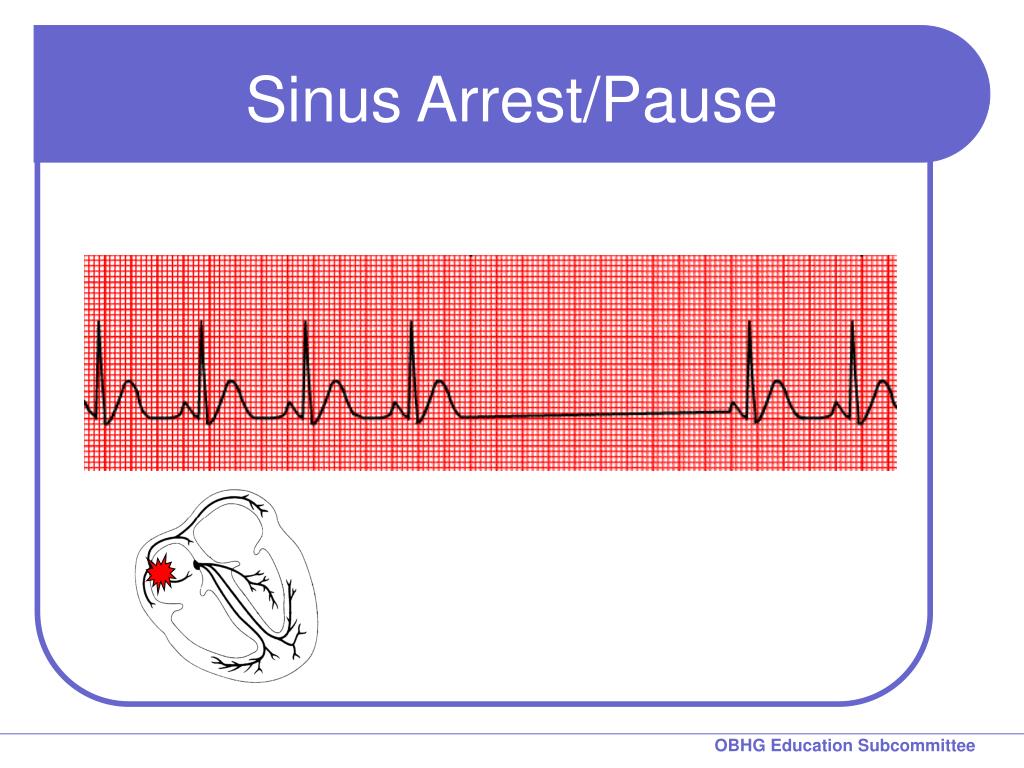Sinus Pause Vs Sinus Arrest - Sinus pause or arrest where there are pauses of 3 seconds or more without atrial activity. Learn the difference between sinoatrial arrest and pause, which are arrhythmias caused by failure of the sinoatrial node to discharge an impulse. This is often rescued by an escape. Learn about pauses, a type of supraventricular arrhythmia caused by a conduction block in the sinus node or the atrium. Patients with sa nodal dysfunction may be asymptomatic or highly symptomatic as in cases of sinus node dysfunction (snd;.
This is often rescued by an escape. Learn the difference between sinoatrial arrest and pause, which are arrhythmias caused by failure of the sinoatrial node to discharge an impulse. Learn about pauses, a type of supraventricular arrhythmia caused by a conduction block in the sinus node or the atrium. Patients with sa nodal dysfunction may be asymptomatic or highly symptomatic as in cases of sinus node dysfunction (snd;. Sinus pause or arrest where there are pauses of 3 seconds or more without atrial activity.
Patients with sa nodal dysfunction may be asymptomatic or highly symptomatic as in cases of sinus node dysfunction (snd;. Learn about pauses, a type of supraventricular arrhythmia caused by a conduction block in the sinus node or the atrium. Sinus pause or arrest where there are pauses of 3 seconds or more without atrial activity. Learn the difference between sinoatrial arrest and pause, which are arrhythmias caused by failure of the sinoatrial node to discharge an impulse. This is often rescued by an escape.
EKG Detective Sinus arrest vs. sinus exit block
This is often rescued by an escape. Learn about pauses, a type of supraventricular arrhythmia caused by a conduction block in the sinus node or the atrium. Learn the difference between sinoatrial arrest and pause, which are arrhythmias caused by failure of the sinoatrial node to discharge an impulse. Patients with sa nodal dysfunction may be asymptomatic or highly symptomatic.
SA Block and Sinus Arrest
Sinus pause or arrest where there are pauses of 3 seconds or more without atrial activity. Patients with sa nodal dysfunction may be asymptomatic or highly symptomatic as in cases of sinus node dysfunction (snd;. This is often rescued by an escape. Learn about pauses, a type of supraventricular arrhythmia caused by a conduction block in the sinus node or.
ECG Educator Blog Sinus Arrest
This is often rescued by an escape. Patients with sa nodal dysfunction may be asymptomatic or highly symptomatic as in cases of sinus node dysfunction (snd;. Learn about pauses, a type of supraventricular arrhythmia caused by a conduction block in the sinus node or the atrium. Learn the difference between sinoatrial arrest and pause, which are arrhythmias caused by failure.
PPT Brady Arrhythmia PowerPoint Presentation, free download ID9503387
This is often rescued by an escape. Learn the difference between sinoatrial arrest and pause, which are arrhythmias caused by failure of the sinoatrial node to discharge an impulse. Patients with sa nodal dysfunction may be asymptomatic or highly symptomatic as in cases of sinus node dysfunction (snd;. Learn about pauses, a type of supraventricular arrhythmia caused by a conduction.
Basic Ekg Reviewr2
Sinus pause or arrest where there are pauses of 3 seconds or more without atrial activity. Learn the difference between sinoatrial arrest and pause, which are arrhythmias caused by failure of the sinoatrial node to discharge an impulse. This is often rescued by an escape. Patients with sa nodal dysfunction may be asymptomatic or highly symptomatic as in cases of.
Sinus Rhythms BMH/Tele
Learn about pauses, a type of supraventricular arrhythmia caused by a conduction block in the sinus node or the atrium. Learn the difference between sinoatrial arrest and pause, which are arrhythmias caused by failure of the sinoatrial node to discharge an impulse. Sinus pause or arrest where there are pauses of 3 seconds or more without atrial activity. This is.
Sinus Pause / Sinus Arrest YouTube
Learn about pauses, a type of supraventricular arrhythmia caused by a conduction block in the sinus node or the atrium. Learn the difference between sinoatrial arrest and pause, which are arrhythmias caused by failure of the sinoatrial node to discharge an impulse. This is often rescued by an escape. Patients with sa nodal dysfunction may be asymptomatic or highly symptomatic.
EKG Detective Sinus arrest vs. sinus exit block
Sinus pause or arrest where there are pauses of 3 seconds or more without atrial activity. Learn about pauses, a type of supraventricular arrhythmia caused by a conduction block in the sinus node or the atrium. Patients with sa nodal dysfunction may be asymptomatic or highly symptomatic as in cases of sinus node dysfunction (snd;. Learn the difference between sinoatrial.
PPT Principles of Cardiac Pacing PowerPoint Presentation ID454515
Patients with sa nodal dysfunction may be asymptomatic or highly symptomatic as in cases of sinus node dysfunction (snd;. Learn about pauses, a type of supraventricular arrhythmia caused by a conduction block in the sinus node or the atrium. Sinus pause or arrest where there are pauses of 3 seconds or more without atrial activity. This is often rescued by.
PPT Chapter 2 for 12 Lead Training RHYTHM PRACTICE PowerPoint
Sinus pause or arrest where there are pauses of 3 seconds or more without atrial activity. Learn about pauses, a type of supraventricular arrhythmia caused by a conduction block in the sinus node or the atrium. Learn the difference between sinoatrial arrest and pause, which are arrhythmias caused by failure of the sinoatrial node to discharge an impulse. Patients with.
Learn The Difference Between Sinoatrial Arrest And Pause, Which Are Arrhythmias Caused By Failure Of The Sinoatrial Node To Discharge An Impulse.
This is often rescued by an escape. Patients with sa nodal dysfunction may be asymptomatic or highly symptomatic as in cases of sinus node dysfunction (snd;. Learn about pauses, a type of supraventricular arrhythmia caused by a conduction block in the sinus node or the atrium. Sinus pause or arrest where there are pauses of 3 seconds or more without atrial activity.









